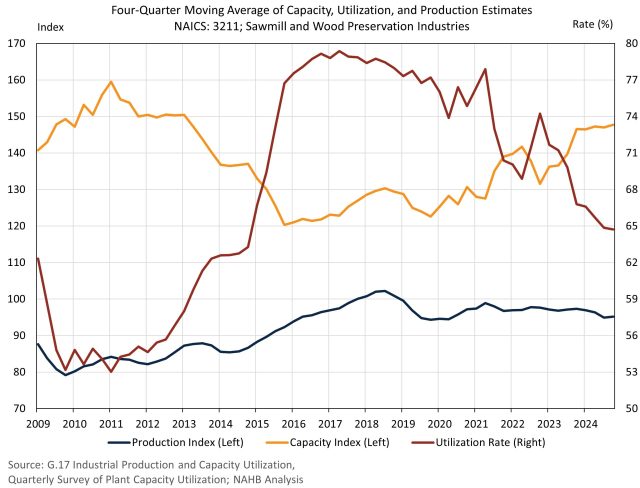U.S. Economy Contracted in First Quarter of 2025
Jing Fu2025-04-30T10:20:27-05:00The U.S. economy contracted in the first quarter of 2025 for the first time in three years, driven by a sharp surge in pre-tariff imports, softening consumer spending, and a decline in government spending. According to the “advance” estimate released by the Bureau of Economic Analysis (BEA), real gross domestic product (GDP) decreased at an annual rate of 0.3% in the first quarter of 2025, following a 2.4% gain in the fourth quarter of 2024. This marks the first quarter of economic contraction since the first quarter of 2022. NAHB predicted a 0.2% increase for the first quarter of 2025. Furthermore, the data from the GDP report suggests that inflationary pressure persisted. The GDP price index rose 3.4% for the first quarter, up from a 2.2% increase in the fourth quarter of 2024. The Personal Consumption Expenditures Price (PCE) Index, which measures inflation (or deflation) across various consumer expenses and reflects changes in consumer behavior, rose 3.6% in the first quarter. This is up from a 2.4% increase in the fourth quarter of 2024. The contraction in real GDP primarily reflected a sharp increase in imports and a decrease in government spending. Imports, which are a subtraction in the calculation of GDP, surged at an annualized rate of 41.3% in the first quarter, as businesses rushed to stockpile goods ahead of implementing tariffs. While goods imports spiked by 50.9%, services imports increased by 8.6%. The import surge contributed to a record-high trade deficit and subtracted more than five percentage points from the headline GDP figure. Government spending decreased at an annual rate of 1.4% in the first quarter. Federal spending fell sharply by 5.1%, partially offset by a modest 0.8% increase in state and local government expenditures. Consumer spending, a key driver of the economy, softened. It rose at an annual rate of 1.8%, the slowest pace in seven quarters. Spending on goods increased by 0.5%, while expenditure on services grew by 2.4%. Private inventories were the largest contributor to the increase in gross private domestic investment. Nonresidential fixed investment increased by 9.8%, with notable increases in equipment (+22.5%) and intellectual property products (+4.1%). Residential fixed investment posted a 1.3% gain, following a 5.5% increase in the previous quarter. Within residential categories, single-family structures rose 5.9%, improvements increased 3.6%, while multifamily structures fell 11.5%. For the common BEA terms and definitions, please access bea.gov/Help/Glossary. Discover more from Eye On Housing Subscribe to get the latest posts sent to your email.



